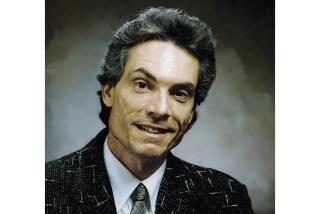Setting Times stories to music: From Dwight Yoakam to Pete Seeger

This week I’ve been a bit obsessed with Isaac Hayes’ epic, transformative covers of some (very non-Stax) pop hits.
I already knew the tremendous “Hot Buttered Soul” album, with its 12-minute “Walk on By” (which manages to channel the pathos of Hal David’s lyrics and be very sexy at the same time), and 18-minute “By the Time I Get to Phoenix” (more on that later).
But then I found his other covers, including two more Bacharach/David songs, “The Look of Love” and “I Just Don’t Know What to Do With Myself”; the Beatles’ “Something”; and the Righteous Brothers’ “You’ve Lost That Lovin’ Feelin’,” which has a five-minute groove starting at the 10:30 point that I had on repeat all week.
Like Nina Simone, Hayes was daring and brilliant in his interpretations of unlikely songs. But it’s his monologues on several that elevate them to works of art.
And none is better than the one on “Phoenix.” For the first eight minutes, he gives a heartbreaking back-++-++story of love and betrayal to the Jimmy Webb hit.
“And seven TIMES he left this woman
And seven times he came back
Ah but you know, the heart can take so much
That’s right
You can kick a dog around for so long and he’ll get tired.”
Goosebumps every time.
It’s kind of a brilliant, grand reversal of what I do each week: He had a song, and he provided the story for it. Genius.
Anyway, in these roundups of the week gone by, I’d like to offer the first paragraphs of each Great Read (or, as they’re known in print, Column One) -- maybe they’ll buy your eye and you can settle in for a good weekend read. And you’ll also get the songs that inspired me while editing the stories, or reading them later if my fellow editor Millie Quan ushered them through. A story soundtrack!
#
Family turns its home into a mosaic artwork
The transformation started simply enough, with a molded ceramic tile of a flower framed by Celtic tracery.
Neither Aziz nor Louise Farnam can recall now where they found the periwinkle square, but, at their son Amiel’s urging, they glued it to the upper-left corner of a low concrete retaining wall in front of their 1930s bungalow in Santa Monica.
Both had seen the elaborately tiled mosques and mausoleums in Esfahan, in their native Iran. It didn’t take long before they were scrounging in Southland secondhand stores, Catalina boutiques and Las Vegas casino shops for more tiles, plates and figurines.
They collected pieces of cobalt blue, aqua, plum and yellows from pale to sunny. They broke or cut them with special nippers into irregular shapes and applied those to the wall, letting them radiate in no particular pattern from the original piece.
They finished that wall, then tiled the walkway to the front door.
From there, things escalated — to a traffic-stopping degree. Motorists routinely slam on their brakes to marvel at the eccentric artistry.
“Everyone knows my house,” Louise said. “Just say ‘mosaic tile house in Santa Monica.’“
About 13 years have passed since the couple set that first tile, and now the entire house on California Avenue at 26th Street is a shimmering montage that beckons the curious.
#soundtrack: “Magnificent Obsession,” by Nat King Cole. Like butter.
#
Snow polo a high-end diversion for China’s rich
Next to buffet tables groaning with spare ribs and stir-fried noodles, the Buenos Aires Marching Band — splendid in red, white and blue regalia — tuned up for its halftime performance at the Snow Polo World Cup 2014.
Elsewhere in the clubhouse, a shiny, white, life-size horse mannequin stood harnessed to a red-and-gold carriage straight out of a Cinderella storybook. At the wine bar showcasing bottles from France and Napa Valley’s Sloan Estate, a quartet of foreigners belted out “San Francisco (Be Sure to Wear Flowers in Your Hair).”
Upstairs, VIPs, including the ambassadors from Chile and Argentina, sipped Champagne and grazed on foie gras, Peking duck and Spanish jamon. Outside, on a polo field covered with man-made snow, Team England was riding to victory over Chile in semifinals of the 10-day, 12-team tournament.
“I was really surprised to come here the first time and find all this,” said Guillermo Terrera, an Argentine who suited up for the three-man Hong Kong China squad (alongside another Argentine and a Brit). “The organization is first-class.”
Though China’s association with the sport can be traced back more than a millennium, it fell out of favor for centuries, and there were no polo venues on the mainland a decade ago. As the country’s capitalist economy has soared and the nation has cast off Mao-era proscriptions against bourgeois pursuits, about half a dozen polo clubs have opened in Beijing, Shanghai and Tianjin.
After taking up hobbies like golf and sports cars, China’s 1%-ers are looking for new exotic diversions, and places like the Tianjin Goldin Metropolitan Polo Club are happy to oblige — for a price.
#soundtrack: “Wild Horses,” by the Flying Burrito Brothers. I probably don’t want to step into the debate about whether Gram Parsons had any role in writing the Rolling Stones song, but he has a record of vulnerable songs like this one (Exhibit A: “Hot Burrito # 1.”) The Stones, not quite as much.
#
Bikers bring life to Mojave Desert ghost town
In 1899, this gold-rich Mojave Desert town had a population of 3,500 and boasted churches, bordellos, saloons, hotels, a thousand-seat opera house and a skating rink.
But when the mines played out, the miners moved on — and left behind boarded-up squatters’ cabins, open shafts and the rusting hulks of mining equipment, preserved for posterity in the dry desert air.
Along Randsburg’s sun-baked main street, vintage storefronts — a barbershop, a store advertising pickles and relishes, a shop that vulcanizes tires — fade to gray like an abandoned Western movie set.
A sign in front of the fire station says, “In case of fire, be calm. Yell loud.” Another, in front of a shuttered antique store, says, “Hopen For Business.”
On a Friday afternoon, the traffic consists of a couple of quails, a jackrabbit, maybe a desert tortoise or a tumbleweed.
By midday Saturday, though, the town is swarming. Hundreds of dirt bikers roar into town, dressed in body armor, heavy boots and helmets, their bikes’ knobby tires raising clouds of silty dust behind them.
They aren’t in town for a motorcycle race, or a movie shoot, or a rumble. They’re not looking for trouble. They’ve come for a bowl of chili at the White House Saloon, a shot of bourbon at The Joint or a banana split at the Randsburg General Store’s 100-year-old soda fountain.
“Help the economy? They are the economy,” says Jim Veach, who owns the White House Saloon. “Without them, I’d be out of business.”
#soundtrack: “A Thousand Miles from Nowhere,” by Dwight Yoakam. What a voice the man has.
Border fence is musician’s wall of sounds
On a windy day in southern Arizona’s remote borderlands, Glenn Weyant had everything he needed to make music — a cello bow, a mallet and the miles-long fence dividing the United States and Mexico.
His method, like his music, was improvisational and low-tech: He inserted electronic equipment into an Altoids tin, turning it into a microphone. Weyant filled the tin with magnets and pressed it against the fence a few inches off the ground. Wires attached to the tin led to an amp and several effects pedals — the kind electric guitarists use — which allow him to manipulate sounds.
Desert scrub, mesquite and sun-bleached rocks would serve as his audience; sometimes they do double duty as instruments.
“Nobody thought of the border wall as possibly anything other than something to separate people,” he said. “I transform it. I play it.”
#soundtrack: “Frontier Ballads,” by Pete Seeger. I chose a whole album, both because the title fits and because I wanted to honor Seeger, an American legend.
#
‘Breaking Bad’ is still cooking in Albuquerque
The shopper nearly whispered her request. “Five bags of the blue stuff,” Susan Clifford said.
Inside the candy shop in this city’s Old Town district, Debbie Ball handed over packets of a turquoise-tinted confection designed to resemble plastic bags of the crystal meth made infamous in the popular TV series “Breaking Bad.”
Clifford planned to ship the bags to friends in Ohio who, like her, were avid fans of the show: “I have thought, ‘What am I doing? This is candy made to look like a dangerous drug.’“
In this city known as the methamphetamine capital of the Southwest, Clifford’s guilty pleasure summarizes Albuquerque’s conundrum: how to battle chronic meth use while celebrating the show that was filmed here and that put the city on the nation’s cultural map.
An entire industry has arisen locally around “Breaking Bad.” Months after the show’s final cut, Albuquerque remains enthralled with the crime drama, even as critics complain about “Breaking Bad”-themed hats, shirts, tours and cocktails.
The show’s defenders downplay the criticism and wonder what’s wrong with having a little fun. “At least I’m not sending it to children,” Clifford said of her purchase. “My friends are consenting adults.”
The series, which aired its final episode in 2013, features Walter White, a terminally ill high school chemistry teacher turned drug kingpin, who cooks meth with ne’er-do-well former student Jesse Pinkman. Their teamwork leads to murder, mayhem and personal ruin.
“People around the world can spell the name Albuquerque, all because of that show,” said Ann Lerner, the city’s film liaison.
#soundtrack: “Crystal Blue Persuasian,” by Tommy James and the Shondells. OK, so it’s obvious. But it fits. (I have no idea what the original meaning of the title was. Does anyone know?)
#
If you have ideas for story soundtracks of your own, tweet the title and artist to @karihow or @LATgreatreads with the hashtag #soundtrack.
More to Read
Start your day right
Sign up for Essential California for news, features and recommendations from the L.A. Times and beyond in your inbox six days a week.
You may occasionally receive promotional content from the Los Angeles Times.





